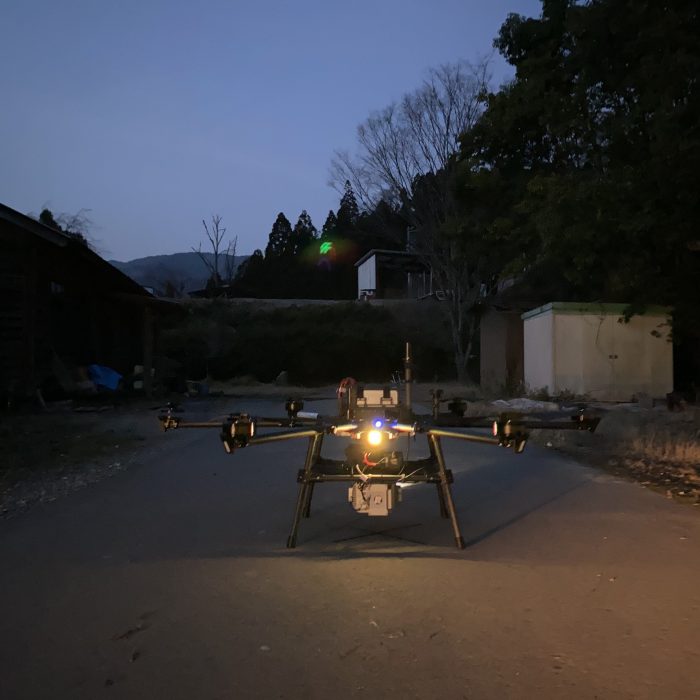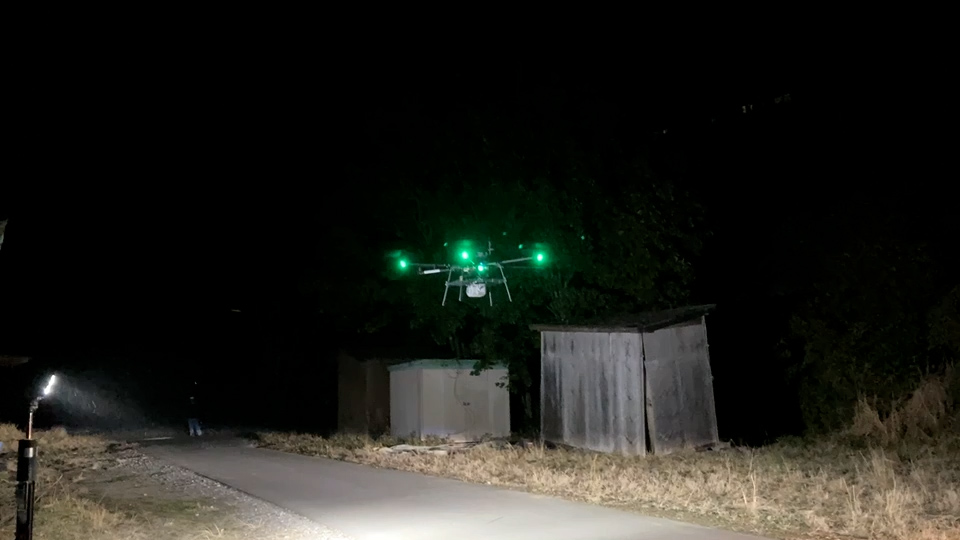
PRODRONE cooperated in the ‘Daytime and nighttime drone laser measurement on natural slopes in Miyoshi City, Tokushima Prefecture, 8-9 March 2023, as part of the “Data accuracy verification and operational improvement demonstration of drone laser measurement during the daytime and nighttime on natural slopes” conducted by the Fire Research Centre, Fire Defense Academy and Central Japan Airlines Co. Ltd. in Miyoshi City, Tokushima Prefecture. The objective of this experiment was to collect information (especially nighttime measurements) during emergency situations (when disasters occur), such as landslides and landslides.
If information can be collected at night at the site of a disaster, it can be used effectively not only for safety management during the night, but also for formulating rescue operation policies from the following morning, and for safe search and rescue operations for those in need of rescue. The Prodrone also cooperated with the Fire Research Centre in a nighttime survey verification test in February 2022, which was conducted under the assumption that a disaster had occurred. In this verification, drone laser measurements were carried out during the day and at night on natural slopes, which are more challenging than flat terrain, and the accuracy of point cloud data obtained from the drone laser was verified.
1. overview
Flights were carried out over two days from 8 to 9 March 2023. The drone was flown in automatic and manual navigation modes, as well as during daytime and nighttime measurements, and the data acquired from each was compared.
Dr Tsuchida, Senior Research Officer, Earthquake and Other Disaster Research Office, Technical Research Department, Fire Research Centre, commented on the verification as follows.
In February 2022, the survey was carried out on level ground (Fujioka Heliport, Toyota City, Aichi Prefecture), but this time the survey was carried out on natural slopes with a difference in elevation. The natural slopes targeted this time are landslide terrain (terrain where landslides have occurred in the past), and various universities and research institutions are actually conducting landslide observations.
In this demonstration, it was possible to collect information on natural slopes during the daytime and at night. However, when targeting natural slopes, the problem of elevation differences in the terrain is significant and it is difficult to fly the drone immediately after arriving at the disaster site without prior preparation. Especially at night, it would be very difficult to fly to the slope side for safety reasons. In the future, we hope to see the development of objective sensors that can respond to overhead wires and drone functions, especially for simple terrain-following flights.
PRODRONE will continue to actively develop aircraft that are useful in times of disaster, reflecting feedback from the field.
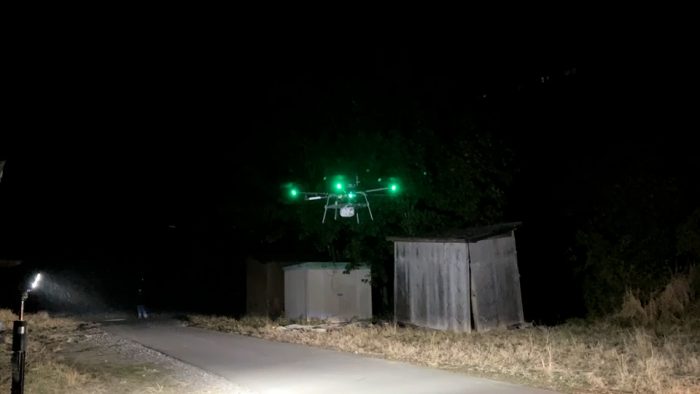
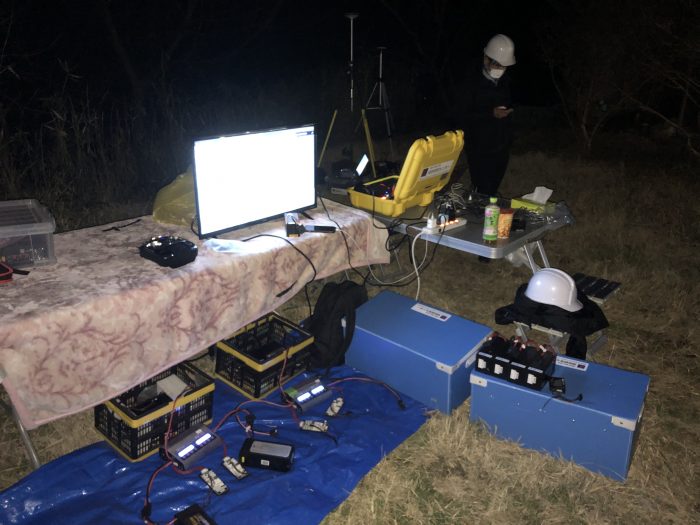
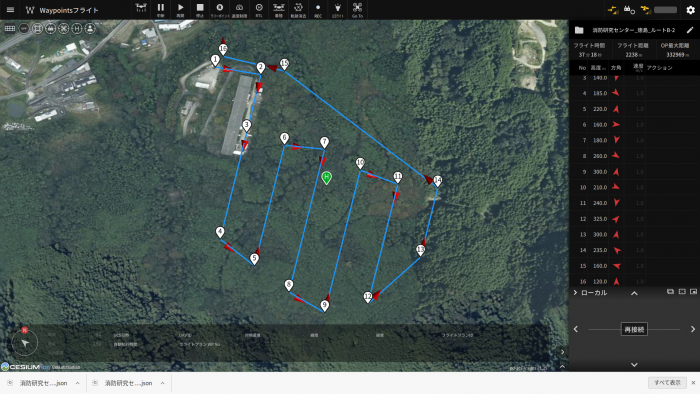
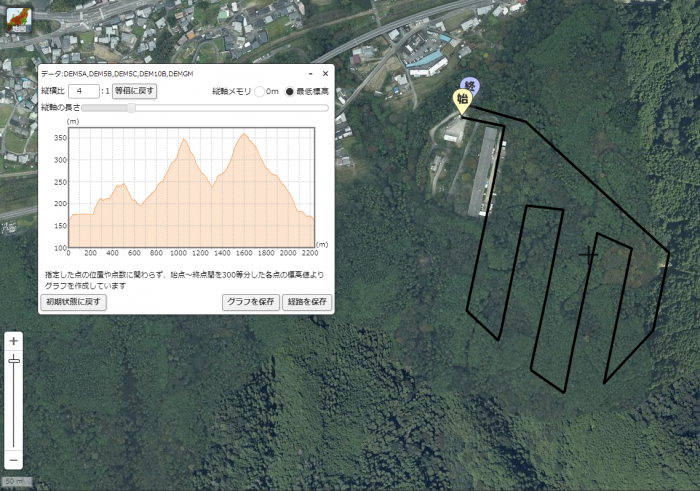
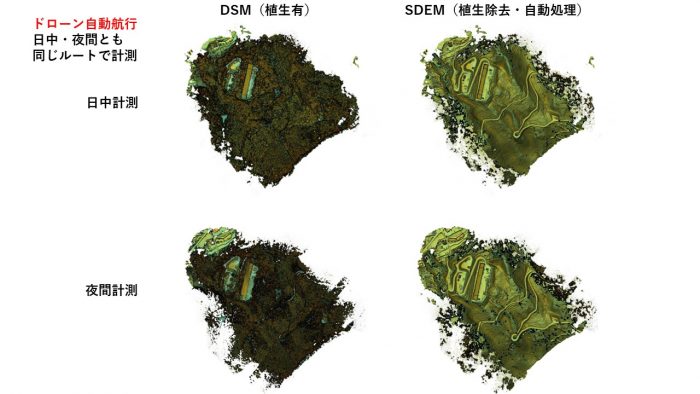
(*1) DSM (Digital Surface Model), also known as a numerical elevation model or digital ground surface model, is a numerical elevation model of the surface layer of the ground (topography) combined with buildings, trees and other land objects on it.
(*2) The SDEM (Substratum Digital Elevation Model) is a model that clearly shows the surface of the ground under vegetation using CJL’s proprietary technology.
2. implementation structure
Fire Research Centre (Demonstration experiment compilation and verification compilation)
Central Japan Aviation Corporation (construction of the surveying system and verification of accuracy)
(flight cooperation and provision of equipment (e.g. generators))
3. Drone overview (PD6B-Type3)
Basic specifications.
Dimensions: 2,181 mm x 2,398 mm
Weight: 20.0 kg (including 4 batteries)
Flight time: 20 min (with 4.9 kg on board)
Battery: 16,000 mAh x 4 batteries
The aircraft (PD6B-Type3) used in this demonstration is a fully operational drone delivery aircraft that complies with Level 3 of the Ministry of Land, Infrastructure and Transport’s flight permit application, which requires high safety standards. It is the first drone in Japan to be adopted for full-scale drone delivery operations, and is currently operating a delivery business in Ina City, Nagano Prefecture. High safety has been achieved through the aircraft design and system redundancy. Protection class IP44, forward collision protection and other features ensure highly adaptable and stable flight. The size of the aircraft when stowed is less than half the normal size, making it easy to handle.
